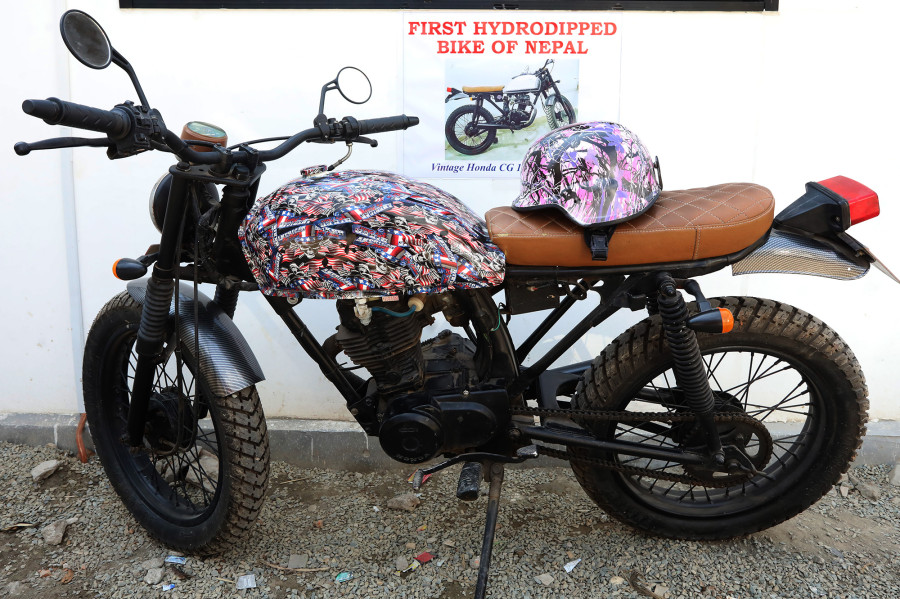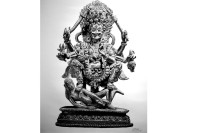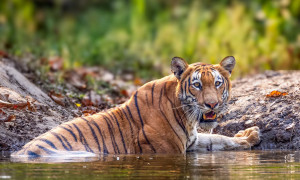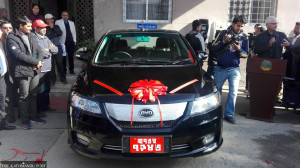Culture & Lifestyle
Dipping into a new custom industry
The country’s only hydro-dipping outfit, Hydro Dip Nepal, allows bike enthusiasts to explore their creative side.
Shashwat Pant
Sauraj Timilsina carefully places the petrol tank of a Royal Enfield on a table to measure how much film he needs. That film, printed to look like carbon fibre, is then transferred to a tank filled with water, called a dipping pod.
After waiting for the water temperature to rise, he places the film on the water and sprays a solution on it called polyvinyl alcohol. Timalsina then dips the tank onto the film and submerges it into the water. Just seconds later, the tank, originally silver, comes out adorned like carbon fibre.
“We started this around two months ago. Since then, we’ve been pretty busy,” says Timilsina, founder of Hydro Dip Nepal, Nepal’s first and only hydro dipping company.
Hydro dipping is a method of applying printed designs to three-dimensional surfaces—anything from helmets to car bonnets and wheels. “We can put the designs on even ceramic and glass objects and, in some cases, shoes as well,” says Timilsina.

The most popular print according to him is carbon fibre. But people are also interested in applying other popular prints—such as V of V for Vendetta—along with abstract designs.
Timilsina says Manish Koirala came up with the idea to start such a venture in Nepal after realising there was nothing of the sort in the country. “As we were just sitting idle, he wanted us to be involved in something. Initially we were not aware of how to do it, but gradually we felt we could,” he says. And the practice is seeing a rising popularity, as it is a great alternative for people who want to add a dash of their personality on their bikes in a country that has made modification on bikes illegal.
After deciding on the idea to start the business, following some research, Timilsina felt the idea could work. He then invited people from India who were into hydro dipping, who came to Nepal and briefed them about the costs and the process.
“I then went to Faridabad, India, to learn how to do it. I stayed there for nearly a week learning the techniques. Then I came back to start this two months ago.”
Timilsina ordered the machines needed to do the hydro dipping of which he needed four—one to spray paint the object, one for the dipping another to clean the object and the last, to dry them.
“Apart from the machines, we also need print designs. These mostly come from China, India and Vietnam,” says Timilsina. “It would only be practical for us to print things that could be sold in bulk. People have liked the designs we’ve brought, so for now we’re happy with it. This is keeping us busy anyway.”
Kshitiz Jung Thapa was one of the company’s first clients, having his bike hydro-dipped to look like carbon fibre and his wheels painted gold. “I like what they’ve done. They’ve made my bike look different,” says Thapa. “I like trying out new things and this has made me stand out amongst my friends.”
The cost of printing depends on the size of the object and the designs people opt for. A full helmet will set people back Rs2,800, while for half a helmet it’s around Rs1,500. Bulk printing is cheaper.

Timilsina believes his prints can be considered art. “I do use technology to make my designs. But it’s not as easy as people think. It takes skill and concentration. If you do it wrong, you have to do it all over again.” He says his company today gets orders even from people outside the Valley. “Last week we received orders from Butwal. It’s been a busy few months,” says Timilsina.
As modifications are illegal in Nepal, Ayush Jung Bahadur Rana couldn’t alter his bike the way he wanted, so when he first heard about hydro dipping, he instantly wanted to do it. “I did it because I wanted my bike to look different. It was recommended that I put stickers on the bike but stickers come off easily,” says Rana. He says that its low maintenance and the finishing is so good that most parts of his bike actually looks like carbon fibre.
“The response I’ve been getting is great. I bet they’ve been getting a lot of customers too,” he says. He was so happy that he has given the company his helmet to customise. “I’ll be taking my car as well. I’m excited to see what they can do to it,” says Rana.
For the future, Timilsina says they want to branch out. Now they know the type of machines needed for the dipping process, they can make it here.
“We’ve been getting a lot of calls asking if they can do what we do. Right now due to COVID-19, we have not been able to import items from China and India. For now, we’re not dwelling on that, but slowly maybe we will venture out,” says Timilsina.




 24.1°C Kathmandu
24.1°C Kathmandu

















